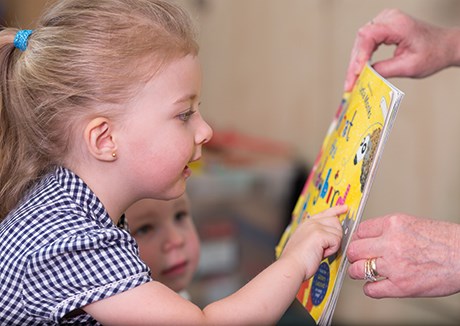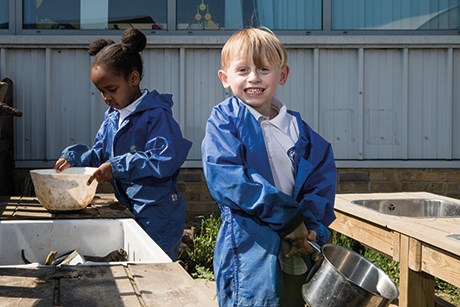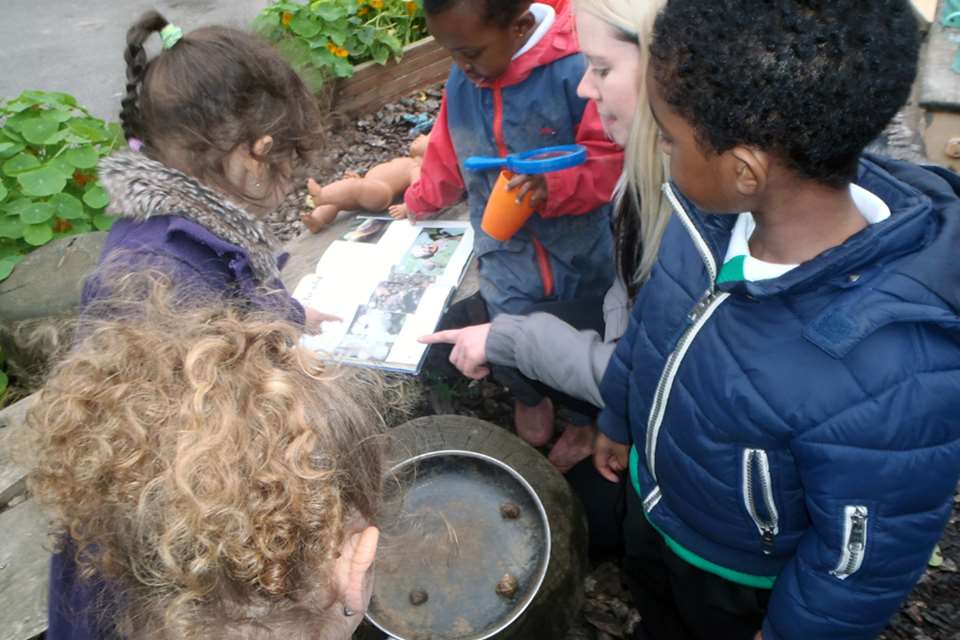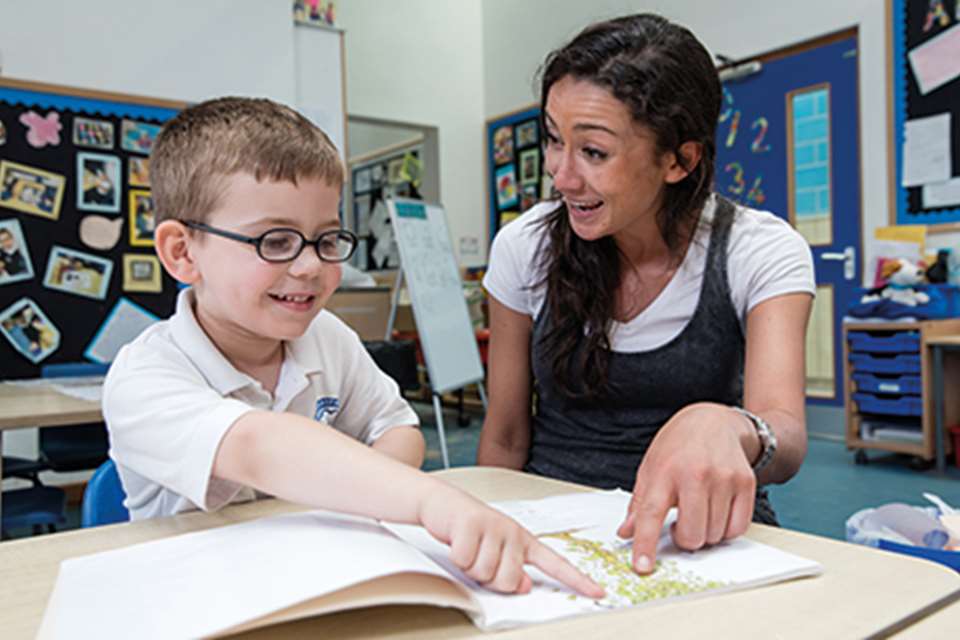The Adult Role: part 2 - Follow the leader
Julie Fisher
Monday, June 25, 2018
The educator role alters subtly depending on whether it is an adult or child leading the learning, says Julie Fisher in part two of her series on the changing role of early childhood educators

Download the PDF of this article
The current image of the child, espoused by leading specialists in early childhood from around the world, is one of a rich, competent, capable theory builder (Gandini 1993). As a result, the role of the adult is no longer viewed as either the proactive filler of an empty pail, nor the passive supervisor, stepping back to let the child develop in their own time and in their own way. Rather, the role of the early childhood educator has morphed into something far more subtle and complex that is hard for anyone who does not work with this age group always to appreciate.
Rose and Rogers (2012) describe the ‘plural practitioner’, changing roles and responsibilities day in and day out in early childhood settings from communicator, carer, facilitator, observer and so on. So, when exploring the current role of the early childhood educator, it would certainly be simplistic to polarise what they plan as either adult-led or child-led. However, as we saw in the first article, the different contexts for learning are frequently about whose purpose an activity or experience is serving and, therefore, who should remain in control of its outcomes.
Having researched interactions between practitioners and children for a number of years (Fisher 2016), I am convinced that practitioners need to be clear about to whom the learning context ‘belongs’, if they are to support learning in that context in the most appropriate ways. Although it could be argued that every activity is for the purpose of the child’s learning and development, the child may not always see it that way!
ESSENTIAL ATTRIBUTES
It is important to say from the start that there are many roles that an early years educator adopts that should remain constant whatever the context for learning. In whatever contexts children are learning, practitioners need to be:
Supportive – the child needs to feel the practitioner is on their side, is helping and not trying to ‘catch them out’. A child needs to trust an adult with their feelings as well as their ideas.
Responsive – the adult must listen carefully to whatever is being said so they can build on the child’s thinking rather than ploughing on with their own agenda, ignoring the contribution a child is trying to make.
Sensitive to the needs, approaches and attitudes of each child – this needs to apply to the child who is tentative about saying their ideas out loud, to the child who may not be as quick or confident as others in thinking things through, and to the mood of the child or their difficulties with a certain aspect of learning.
Genuine – children know when adults like them and are interested in them. They are drawn to adults who take time to build relationships, who draw on what they know about the child as an individual, who say things that they mean and that are not fake.
Supporting strategies
While these attributes should be consistent whatever the context in which practitioners engage with children, there are certain strategies that are particular to three types of learning outlined in part one of this series:
adult-led (or adult-directed)
child-led (or child-initiated)
adult-initiated (see Definitions).
To begin with, I want to examine the two ends of the learning continuum: child-led and adult-led, because I feel that it is here that practitioners often adopt a role that is unsuited to the learning that is planned.
If practitioners approach a child-led activity, for example, using the same strategies that they use in an adult-led context, then they can rob the child of the very purpose and control that the child-led learning was set up to encourage in the first place. Between adult-led and child-led learning there is a difference in ownership and a difference in objectives. Put plainly, if an adult is leading the learning, then the hope is that the child will follow that lead. If the child is leading the learning, then it is the role of the adult to follow that lead.
Being the leader or the follower in a learning situation places the adult in a very different position and means that their contribution to that learning will alter. Having your own agenda as an adult, and tuning in to a child’s agenda, requires different skills, different insights and a different ‘hat’. Practitioners have to make sure that, when approaching an activity, they have the right hat on.

ADULT-LED LEARNING
The whole point of adult-led learning is to teach the child something that the practitioner believes will be of value to the child now and which the child might not discover by play or exploration alone.
As I have already suggested, what the child is taught in an adult-led context is currently contentious. Few early years educators would disagree with teaching the child how to hold a hammer or a saw safely, so that the child can use these safely at the woodwork table in the future. However, there is less consensus about whether teaching systematic synthetic phonics, for example, to a whole class of children at the same time (many of whom are not yet of statutory school age) is appropriate in terms of some children’s understanding, motivation or self-confidence.
We will explore how some of these more prescriptive and developmentally challenging concepts can be planned for in the final part of this series, but for now the reality is that many practitioners are required to teach this more prescriptive agenda and, just as with the example of using the hammer and saw, the purpose of the activity belongs to the adult. The adult has decided (even if required by others) that their planned activity will bring about desirable learning outcomes for the child.
Leading the learning
The purpose of adult-led learning then is to focus children’s learning on something specific; to narrow down all the learning possibilities afforded by early years environments to say ‘at this moment in time, for reasons that I have judged appropriate, I want you to learn this’. When an early childhood educator is leading the learning then it is hoped that the children will follow that lead. There would be no point in planning an adult-led activity otherwise.
In adult-led learning, because the adult is alongside the child, they have many opportunities to impact on learning. During the activity, adults:
- model skills and language and behaviour
- offer solutions and suggestions as they engage in dialogue
- offer support and encouragement
- can stretch and challenge children’s learning where this is deemed appropriate
- can stimulate and provoke thinking.
All of these opportunities are possible because the adult is there at the time and can make the most of the teaching opportunities presented, while steering and guiding the child towards the adult’s planned outcomes. For this role to be effective, the practitioner must have sound subject knowledge across the curriculum as well as a deep knowledge and understanding of child development.
CHILD-LED LEARNING

The purpose of child-led learning is the complete opposite of adult-led learning. Rather than narrowing down learning, it opens it up. It says, ‘Given the constraints of the learning environment and resources that are in this setting, you (the child) can explore, investigate and play however you choose.’
Child-led learning puts the child firmly in control of the experience and, as research has shown, with this freedom, children:
- demonstrate their independence
- engage in problem-solving and use their initiative
- are highly motivated, which often leads to greater concentration and perseverance
- engage in creative and imaginative thinking
- negotiate and collaborate with their peers to bring about their desired outcomes.
All of these are life skills. All of these skills are necessary and desirable as an adult – in families, with friends, in the workplace. While the skilled practitioner will also observe mathematical understanding, language use, scientific exploration, physical prowess and creativity in any given child-led activity, this is not the sole purpose of that activity.
The purpose of child-led learning is predominantly to empower the child to be an independent thinker and learner: to set their own challenges, to achieve their own goals. What remains crucial is that, when (and whether) an adult comes to support that learning, the agency afforded the child by this context for learning is enriched and not hijacked by the adult for their own ends.
Following the learning
When the child is leading the learning then the effective practitioner follows the child’s lead and becomes the adult that the child needs them to be. Sometimes a role is given directly to the practitioner – ‘Can you help me/hold this/watch this/fetch more…?’ Sometimes the practitioner must wait to work out what – if any – their role will usefully be.
Once engaged in child-led activity, following the learning can be complex and challenging because young children’s thinking is often idiosyncratic, frequently unpredictable and rarely transparent. For the child, the threads of their thinking are logical and meaningful. For the practitioner, following the thinking of a young child can be like chasing the tail of a kite as it whips and spirals in the currents of the air.
Importantly, in both child-led and in adult-initiated situations, the first role of the adult is to do nothing. If the environment is well planned and resourced (for child-led) and if the task is sufficiently open-ended and meaningful (for adult-initiated), then learning will have been taking place when the practitioner wasn’t there and the practitioner must respect that learning and not bowl in with the age-old, disruptive question, ‘What are you doing?’
The minute that question is asked, the child or children must stop what they are doing to answer. It is likely, therefore, that the threads of their thinking will be at best interrupted and at worst disconnected. When approaching learning that is already in full flow, the practitioner should wait, watch and wonder.
To wait
Waiting shows respect. We teach children not to barge in to the middle of our conversation with another adult, so why would we barge in to the middle of theirs? It is when practitioners barge in that they do not know where to start a conversation and end up sometimes asking those mindless, infuriating questions about numbers, colours and shapes because they come easily to mind and they fill what otherwise might be an awkward silence.
If practitioners do not wait before deciding whether to interact, then they do not take the time it takes to tune in to the child and often end up putting their own thinking above the thinking of the child.
To watch
Watching involves active listening, as well as observing. Watching (and listening) tells the practitioner:
- who is involved or not
- who is grappling (positive)
- who is struggling (negative)
- what the child is trying to do
- what the child is thinking about.
There is a danger that if practitioners do not wait and watch then they assume that what the child is doing is what they are thinking about. Yet very often in the early years this is not the case.
There are times, of course, when the level of involvement is so intense that you can see the whole of the child is involved – eyes, body, mind, energy. But there are also times, perhaps, when:
- children are doing something more familiar
- they are consolidating their learning
- only part of their attention is focused on the task in hand
- their involvement is less intense
- their minds are free to think about whatever is of most concern to them at that moment.
When practitioners wait and watch, they can tune in to the face rather than the hands, to look for cues and clues as to the child’s level of involvement, so that they successfully tune in to children’s thinking, rather than just their activity.
To wonder
Wondering reminds the practitioner to ask questions of themselves rather than always ask them of the child:
- I wonder why Rani is sitting out and watching today?
- I wonder why that group don’t seem to be using the water containers in the way I asked?
- I wonder if I can give Lisa another strategy to use in her home corner play?
- And finally, the most critical question of all:
- I wonder, if I open my mouth now… will it help?
The role of the adult is dependent on the particular learning situation in which the child and practitioner are engaged. When practitioners are clear about whose purpose the activity is serving and whose objectives are being met, they can adapt their role accordingly, and be the adult that the situation demands.
KEY POINTS
The role of the educator changes subtly according to the context of the activity – i.e. whether it is adult-led, child-led or adult-initiated.
Whatever the context, the adult should be supportive, sensitive and responsive.
The purpose of an adult-led activity is to teach children something of value to them. The adult can model language, behaviour or a skill, offer encouragement, provoke thinking while guiding the child toward the planned learning outcomes.
Child-led learning puts the child firmly in control, so the adult role is to empower the child to be an independent thinker and learner and to set their own challenges.
What is vital in the child-led and adult-initiated context is that the adult avoids hijacking children’s play for their own ends. Before intervening, the adult should first wait, watch and wonder to assess how they can make a positive contribution to a child’s explorations.
In summary, if an adult is leading the learning, the hope is that the child will follow that lead, and vice versa.
DEFINITIONS: TYPES OF LEARNING
Adult-led, or adult-directed – where the practitioner provides a certain activity or opportunity for children and is in control of the outcomes.
Child-led, or child-initiated – where the child is given time, space and opportunity to play, explore, investigate and is in control of learning.
Adult-initiated – where a practitioner provides an activity or opportunity that children will undertake for much of the time on their own. Control of the learning will start with the adult but may shift to the child as they embark on their own independent enquiry.
ABOUT THIS SERIES
Who should initiate and lead learning in an early years environment? And what is the adult role in supporting learning in different contexts? These are the questions that will be addressed in this four-part series looking at:
- child-led, adult-led and adult-initiated learning (see ‘Leading or following’, Nursery World, 28 May and at: www.nurseryworld.co.uk)
- the role of the adult and child in learning experiences
- the challenges of supporting learning
- balancing adult-led and child-led learning
MORE INFORMATION
Fisher J (2016) Interacting or Interfering? Improving interactions in the early years. Open University Press
Gandini L (1993) Fundamentals of the Reggio Emilia Approach to Early Childhood Education in Young Children, 49 (1)
Rose J and Rogers S (2012) The Role of the Adult in Early Years Settings. Open University Press
Part 3 of this series will be published in Nursery World on 23 July







